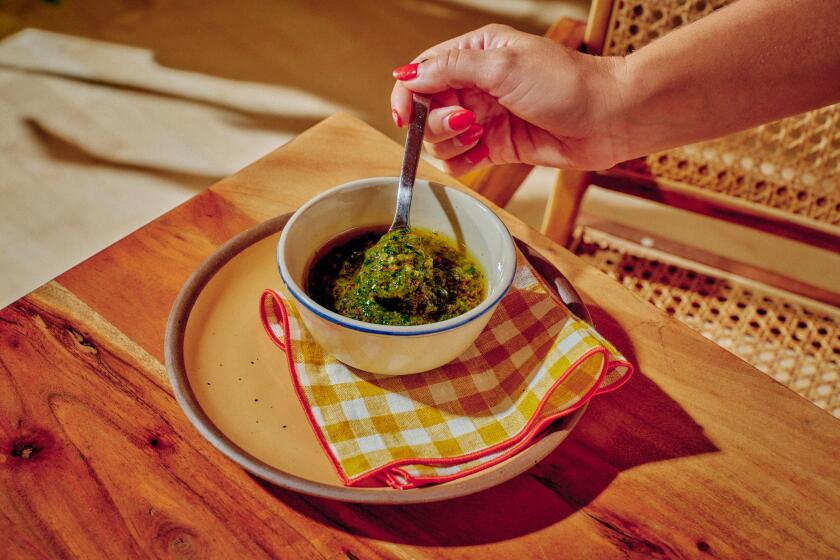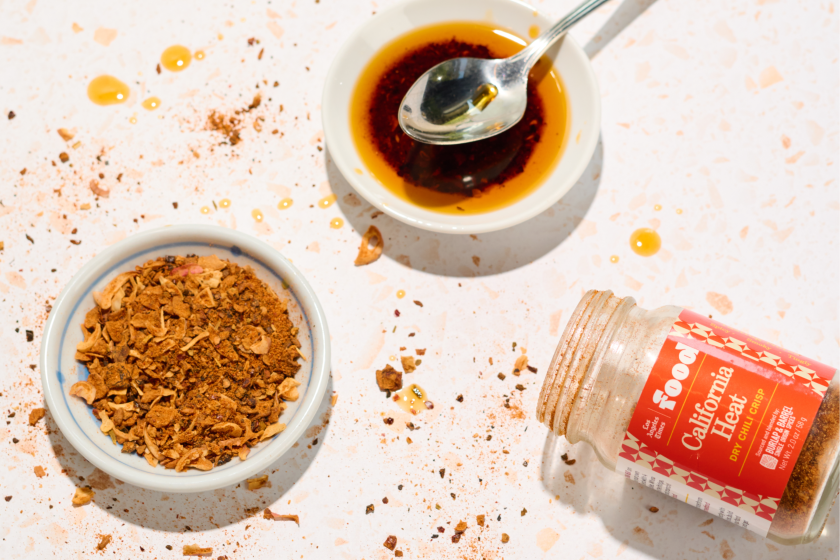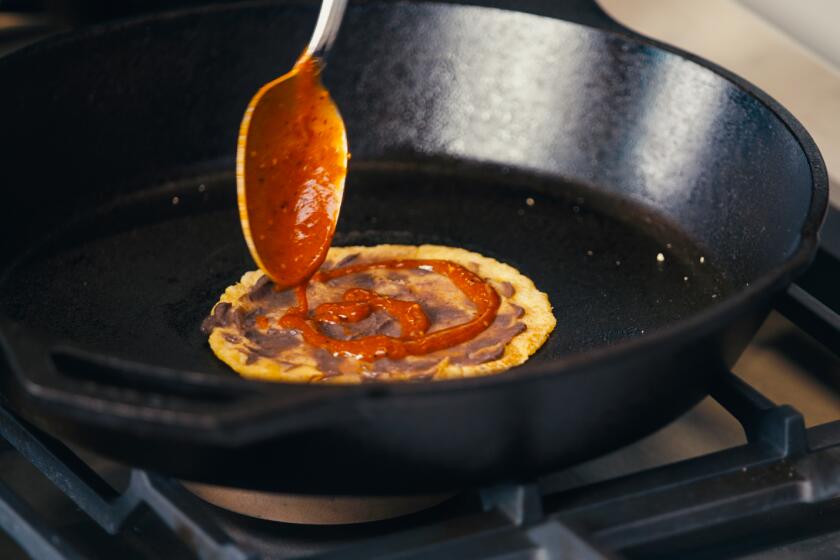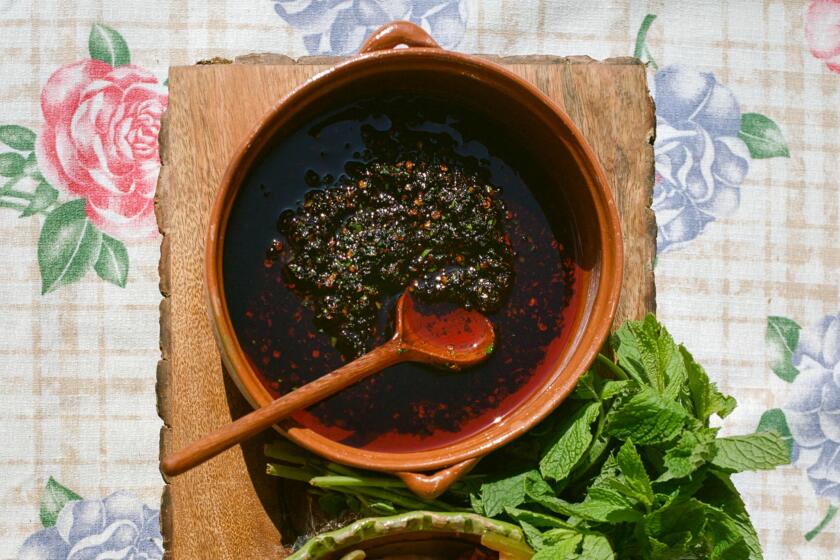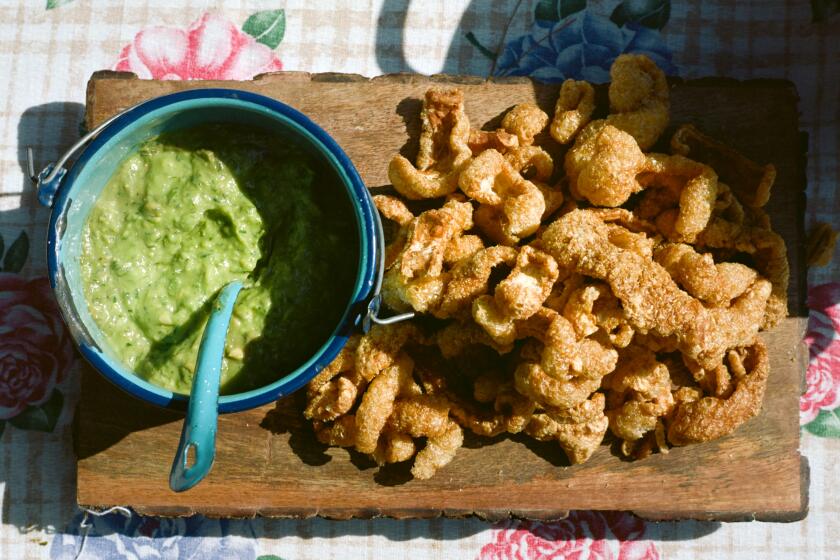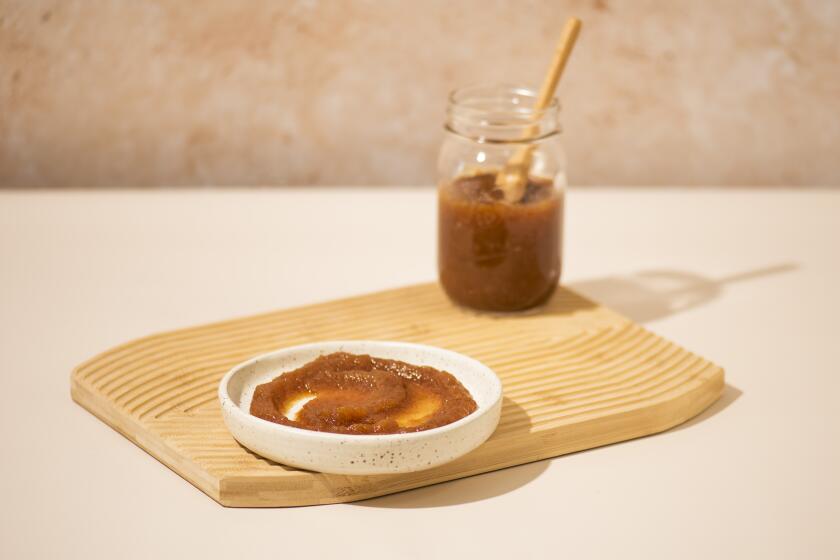Sauce allemande

The bechamel I learned to make in restaurant school was not much different from what my dad always whisked up as gravy for biscuits: fat and flour cooked into a roux, boiled fast with milk and spiced with a little pepper. One spoonful made it easy to understand why white sauce had faded off style-conscious menus.
By contrast, the recipe for bechamel in the new biography of Antonin Careme makes it easy to taste why white sauce will never completely disappear. It calls for a shallot pricked with a clove, a lot of nutmeg and a bouquet garni (a bundle of herbs -- traditionally parsley, thyme and bay leaf), plus slow cooking for 20 minutes rather than Betty Crocker’s one-minute boil. The flavor is more finessed than floury, and the creaminess gets you thinking of how good it would be with peas, spinach, veal or in a gratin.
The fact that a recipe invented hundreds of years ago and named for a long-forgotten marquis could still have currency when made right is just one testament to the importance of Careme, a Parisian street urchin who rose through brutally grueling kitchens to become one of the most influential figures in food to this day. He is best known for codifying French sauces, for spelling out that bechamel is the mother of Mornay and Nantua the spawn of veloute. But as “Cooking for Kings: The Life of Antonin Careme, the First Celebrity Chef” by Ian Kelly (Walker & Co., $26) makes clear, he led an extraordinary life in his 50 quick years before succumbing to the bane of 19th century cooks: slow poisoning from charcoal fumes in basement kitchens.
Careme invented myriad dishes, including vol-au-vent (puff pastry packets so light they “fly on the wind”) and several hundred soups. He was a renowned pastry chef who studied architecture to the point of obsession and a self-taught reader and writer who painstakingly produced exhaustive cookbooks, one a virtual kitchen encyclopedia complete with table-setting diagrams. He changed the ways meals were served for all time and the way chefs covered their heads until baseball caps were invented (his toque replaced a sort of nightcap). Overall, by the time he died in 1833, he had elevated cooking from grunt work to esteemed profession.
But that was then. These days, it’s not what you do, it’s how you sell -- and so the biography’s subtitle refers to Careme as the “First Celebrity Chef.” Which is almost like writing Einstein off as the first celebrity scientist. (Kelly is an actor who appears in a one-man show on the same subject.)
Careme made himself a boldface name to rival those of the clients to whom he catered, from Talleyrand to the Rothschilds. But reading about his unceasing creativity and orderliness only makes today’s TV Food Network stars seem that much dimmer. Endorsing a line of cookware, signing a cookbook written by someone else or putting your name on 26 restaurants is not quite the same as creating and recording meals with 100 or more dishes at a time when ingredients could not be Fedexed from around the world. Careme was a revolutionary.
“Cooking for Kings” is a better biography than it is a cookbook. The recipes are fascinating to read, mostly because they make you marvel at what Careme was able to do with only the most rudimentary tools, with nary a blender to stand naked behind. (He could send out veal heads in turtle sauce, for one thing -- think of the mise en place for that.) But not very many are designed for your average dinner party.
Consider his formula for Russian soup, which calls for three pounds of beef brisket and a pound of bacon boiled in beef stock for three hours, augmented by onions and cabbage, boiled for two more hours, then finished with six boiled sausages. After that gas, it’s a wonder Careme didn’t invent flight.
The author clearly has been selective in his recipe choices, though. For every Souffle a la Rothschild made with Danziger Goldwasser there is a sauce allemande featuring a clever technique that starts with boiling water and comes together with egg and vinegar. When mothered into an Italienne sauce lavished with Champagne, it produces just the right tart-creamy counterpoint to sea bass. Simple but elegant, it tastes very 21st century, and not just because the fish is grilled.
Careme’s fresh pea soup probably best illustrates what happens when centuries collide. The recipe calls for six pints of freshly shelled peas to be cooked in salted water, then pressed through a sieve and enriched with a game demi-glace. I started with the sieve, collected a tablespoon of pea puree after five minutes and switched to my Osterizer in frustration. What I wound up with was a rather ordinary bowl of green, redeemed only by its buttery, crunchy croutons. That and a new appreciation for the whole platoons of scullery boys Careme relied on to actualize his many menus.
Those menus, however, are almost worth the price of the book. Even Princess Cruises wouldn’t dare do some of these, like the buffet starting with eight soups and eight first courses of fish, progressing through 40 entrees and winding up with 16 desserts. And that was just at one sit-down in England, in honor of the cousin of Czar Nicholas.
All the quirky artwork in “Cooking for Kings” helps make it a fast read on a summer day. The book is replete with illustrations of the “extraordinaires” Careme designed and produced from sugar as centerpieces, his own architectural drawings and a few reproductions of paintings -- most notably a stunning one by Jean-Auguste-Dominique Ingres of Betty Rothschild, the Jewish socialite married to her super-rich uncle who fast-forwarded their acceptance into Parisian society, along with the cause of cuisine, by hiring Careme, whose fame enhanced theirs.
I suppose there’s justification for selling this story as if it were fodder for People magazine. But at least it’s a reminder that “bam” is not a legacy.
Whisk together the egg and vinegar and set aside.
Melt the butter in a saucepan. Whisk in the flour until smooth. Add the boiling water and whisk until smooth. Season with salt and pepper to taste.
Remove from the heat and gradually whisk in the egg mixture. Do not reboil. Makes 1 1/4 cups.
Get our Cooking newsletter.
Your roundup of inspiring recipes and kitchen tricks.
You may occasionally receive promotional content from the Los Angeles Times.










